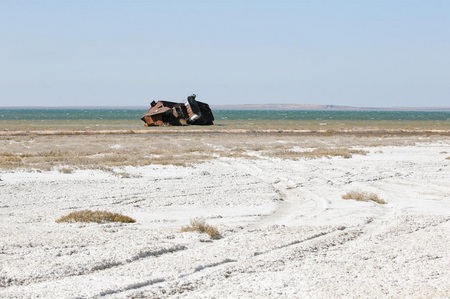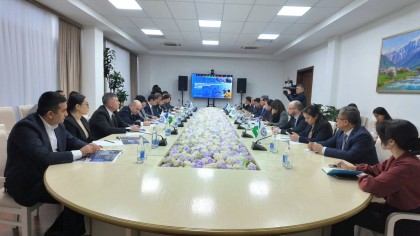A study conducted by the World Bank estimates the costs of impacts that sand and dust storms from the dried Aral seabed have on people’s health, livelihoods, and environment in Uzbekistan. The study demonstrates that effectively implemented landscape restoration can provide benefits that far outweigh its direct economic and financial cost.
These benefits can accelerate Uzbekistan towards a green economy and meeting its international climate change commitments.
The dry Aral seabed spans an area of about 60,000 km2, nearly half of which is located in Uzbekistan’s Republic of Karakalpakstan, home to 1.8 million people. In the past few decades, this salt desert has become a source of sand and dust storms. Each year, the storms carry about 15–75 million tons of sand, dust, and salt from the dried Aral seabed across Central Asia. The resulting soil erosion and air pollution negatively impact people’s health, livelihoods, and environment.
Closing the Knowledge Gap
A joint World Bank and Uzbekistan State Committee on Forestry study: The Value of Landscape Restoration in Uzbekistan to Reduce Sand and Dust Storms from the Aral Seabed estimates the economic losses caused by sand and dust storms and the local, regional, and global benefits that landscape restoration efforts generate. The study was completed as part of RESILAND, a land restoration program in Central Asia with support from Wealth Accounting and the Valuation of Ecosystem Services (WAVES) and PROGREEN.
- Every year, sand and dust storms from the Aral seabed generate losses of over $44 million.
- Most of the dried Aral seabed in Uzbekistan can be restored by planting an optimum combination of native drought- and salt-resistant trees, shrubs, and grasses.
- With careful planning, landscape restoration in the Aral seabed can be economically viable and can significantly reduce air pollution as far as 100–200 km from the former Aral seashore resulting in improved health and livelihoods.
- Regenerating the Aral seabed can contribute an additional $28–44 million in benefits every year and can provide climate change mitigation benefits by preventing release of carbon from the soil and absorbing CO2 from the atmosphere.
A Green Way Forward
Landscape restoration projects in Uzbekistan, including those in the former Aral seabed, can form an integral part of a national green growth strategy for economic development. A green growth model is based on sustainable and efficient use of natural and energy resources that strengthens resilience to natural disasters and climate change by minimizing pollution.
In addition to accelerating Uzbekistan on the path to green growth transition, effective landscape restoration projects can provide regional and global benefits that far outweigh their direct economic and financial costs and can contribute to Uzbekistan meeting its global climate commitments under the Paris Agreement Nationally Defined Contribution (NDC) targets, the Degradation Neutrality, and the Bonn Challenge.















